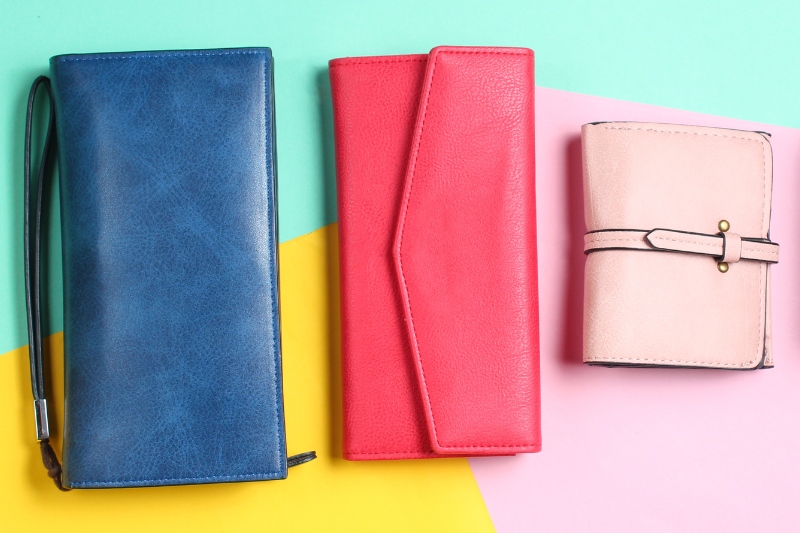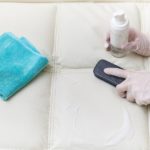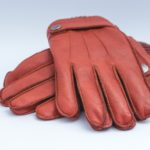A leather purse is more than a fashionable accessory; it’s a functional pouch that carries all your bank cards, coins, and notes.
While a bit pricier than purses made of other materials, they are a worthwhile investment that can last you for years when cared for properly.
Unfortunately, frequent usage means they are prone to accumulating dirt, grime, and stains that slowly ruin their appearance. However, this can be avoided with the correct cleaning techniques.
In this article, we provide you with step-by-step instructions on how to clean a leather purse so that you can keep using it for many years to come. Read on for all you need to know!
What’s the Best Way to Clean a Leather Purse?
When it comes to leather, a good cleaning routine is vital in preserving its quality appearance.
Even if your purse looks as good as new, regular maintenance cleans can help prevent the leather from becoming worn and faded.
Unfortunately, you can’t chuck your leather purse in the washing machine!
To ensure that your leather purse remains in the best possible condition, we suggest going through the following cleaning process instead every one to three months.
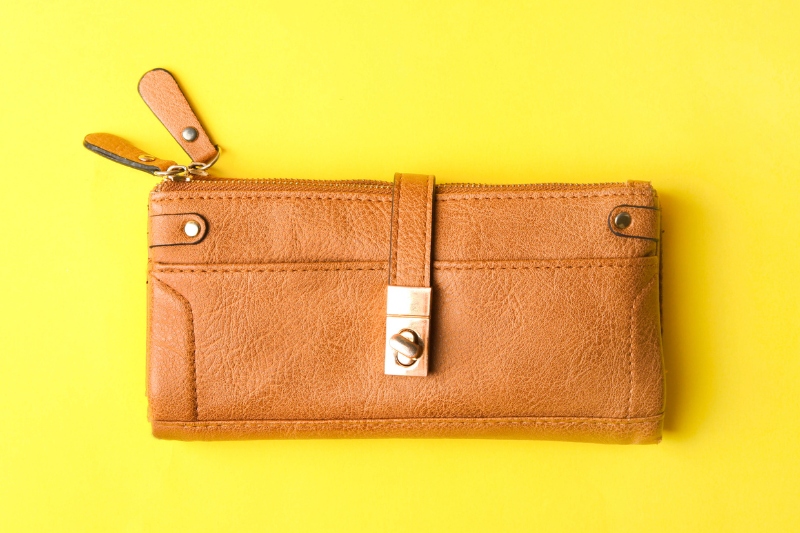
You will need the following:
- Leather soap
- Soft cleaning cloths, preferably white
- A lint roller
- Leather conditioner
- Leather stain remover
- A vacuum cleaner
- A Soft brush
Step 1: Remove loose debris
Before you go in with a cleaning solution, remove any loose debris from your purse. To do this, start by removing any items from inside (coins, bank cards, etc.), and then use the smallest attachment on your vacuum cleaner to remove any dirt from the lining. If there is still some remaining build-up, we suggest using a lint roller to remove it.
Once the inside is clean, you can work on the purse exterior. As you are now working with the leather, you will need to use a damp cloth to wipe off any dirt rather than a vacuum cleaner.
Make sure you pay attention to any creases or corners that are prone to debris build-up.
Step 2: Do a patch test
When using a new cleaner, it is vital to do a patch test before using it on the entirety of your leather purse.
To do this, apply a small amount of the leather soap to an inconspicuous part of the purse, let it work for a few minutes, and then wipe it off with a damp cloth.
If there is any discolouration once the leather soap has been removed, do not use it on the rest of your purse.
You will have to purchase a different cleaner and repeat the process until you find a product that doesn’t cause any damage to the leather.
We highly recommend Leather Honey’s cleaner, which has received thousands of good reviews.
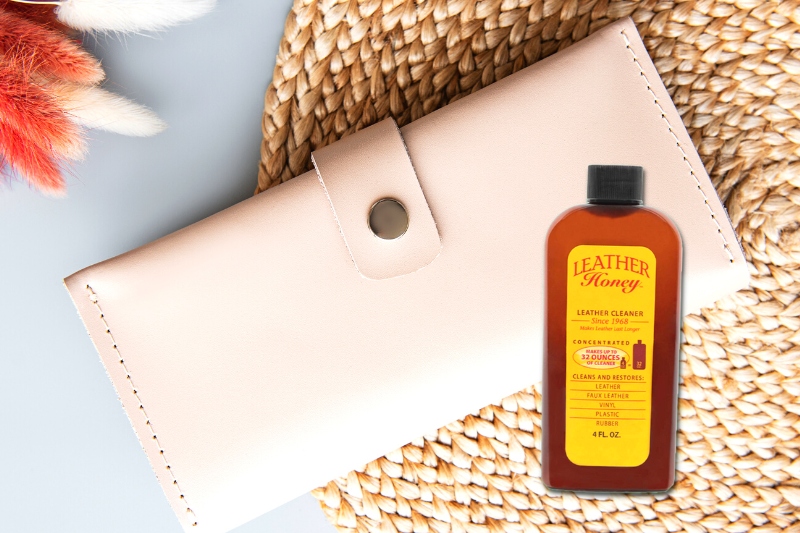
Step 3: Apply the leather soap
Use a clean, white cloth to gently apply the leather soap on all surfaces of your purse. Use gentle motions to ensure the leather isn’t damaged during application.
Always read the label instructions for the cleaner before using it. Rather than direct usage, some products must be diluted in warm water before applying to the leather.
If this is the case, ensure you wring out the cloth before wiping down the purse. Too much water could cause damage to the leather, so it is best to use a damp cloth at all times.
Step 4: Dry the leather
Once you’re happy that your purse has been cleaned all over, use another clean cloth to dry the leather.
At this point, your purse will look reasonably clean, although there may be a few stains on the material that your cleaner has not managed to remove.
If your purse is made of light-coloured leather or is very absorbent, you may wish to repeat steps 3 and 4 before moving on.
Step 5: Treat stains
If any stains on your purse will not come out with your leather soap, you will need to treat them now.
Your best bet for treating stains at home is a good leather stain remover.
Apply a small amount of the liquid to the area, leave it to sit according to the label instructions, and then wipe the patch clean with a damp cloth. Ensure the leather is fully dry before moving on to the next step.
Unfortunately, there are some stains that you will not be able to remove yourself and will need to seek professional help with.
This typically occurs when a stain has been left for an extended period without treatment.
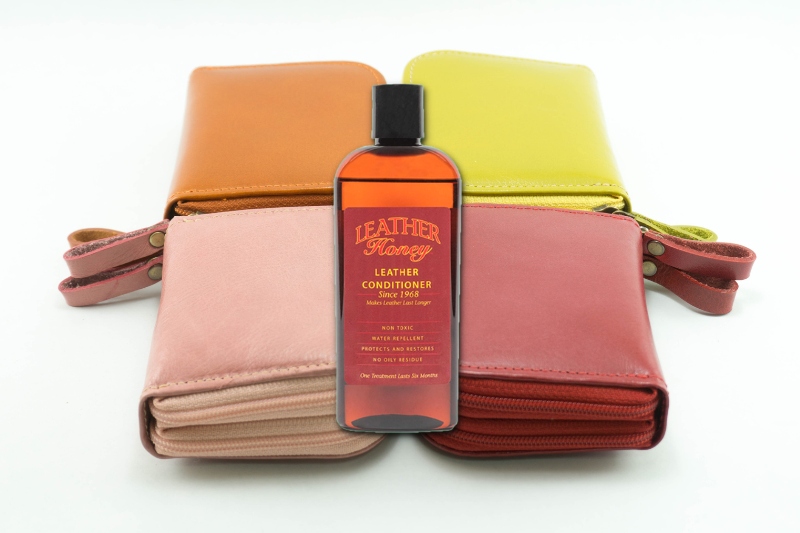
Step 6: Condition the leather
Applying leather conditioner to your purse will help it remain soft and flexible, as well as provide some protection from stains.
For the best results, follow the label instructions for whichever product you buy.
If you want a recommendation, Leather Honey also makes a great conditioner that is as highly rated as their cleaner.
Typically, you must rub a small amount of the conditioner into the leather using a circular motion.
Once you’re done, you can wipe off any excess with a clean cloth and leave the purse to air dry in a well-ventilated area.
Step 7: Polish and buff
The final step in cleaning a leather purse is to buff the surface and restore the leather’s shine. You can do this by rubbing at the material using a clean cloth.
Before starting, ensure that the purse is completely dry; otherwise, you will have to repeat this step later.
What’s the Best DIY Leather Purse Cleaner?
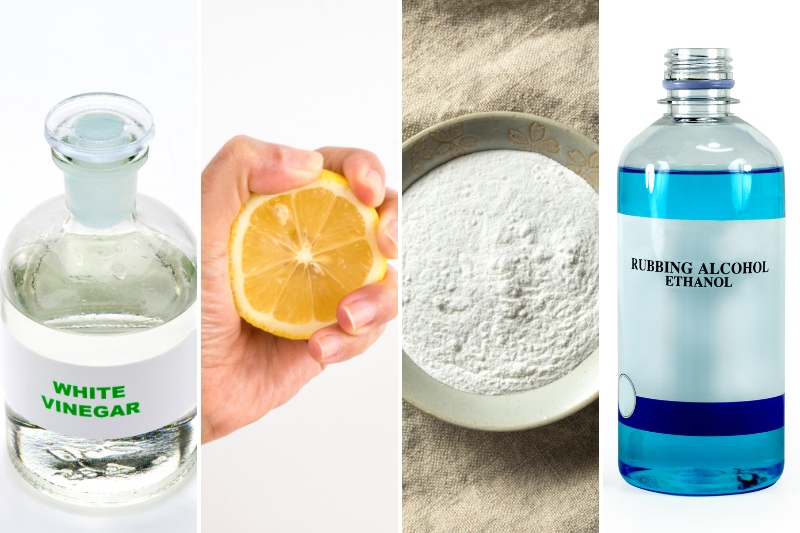
When cleaning a leather purse, we highly suggest sticking to commercial products designed for use on leather.
This being said, you could try several home remedies if you don’t have the right products on hand. These include:
- Mild soap and water: You can wipe a mixture of mild soap and water over your leather purse instead of a commercial cleaner. Depending on what you have to hand, you can either add a tiny amount of liquid soap to a damp cloth or rub the damp cloth against a bar of soap until it foams up.
- White vinegar and water: To safely use white vinegar on leather, you need to dilute it with water. A 50/50 ratio often works well. This solution can then be wiped over your purse using a clean cloth.
- Lemon juice and cream of tartar: When mixed together, these household ingredients create a cleaning paste ideal for removing stains. Make the paste by combing one part lemon juice with one part cream of tartar, apply it to the stained area, and let it sit for 10 minutes before wiping it off.
- Rubbing alcohol: Rubbing alcohol is another option for removing stains from your purse. It is especially effective when targeting ink marks. Simply wipe the stain with a cloth dipped in rubbing alcohol until all traces are gone.
Be warned that these ingredients could cause damage to your leather purse, so it is always best to do a patch test and continue with caution.
Watch out for discolouration, very dry patches of leather, or any other changes to the material of your purse.
Top Tips on Caring for a Leather Purse
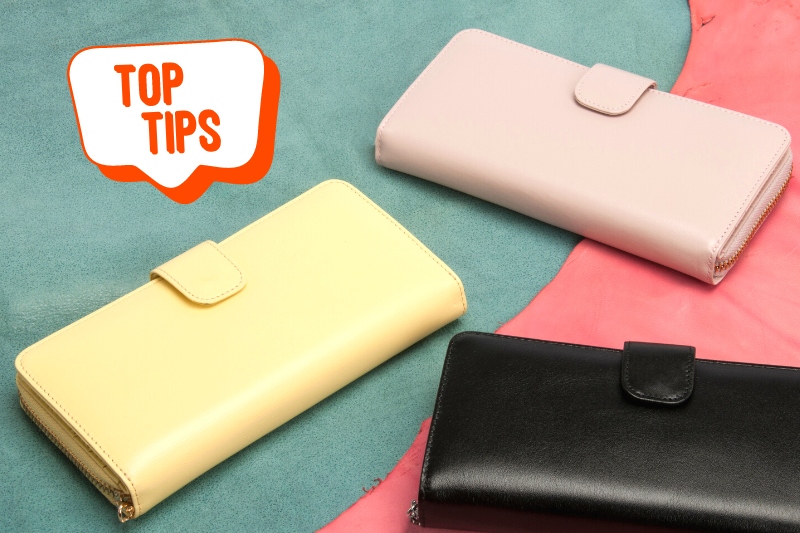
While regularly cleaning your leather purse is a great way to keep it in pristine condition, there are some other things that can prevent unwanted wear and tear:
- Avoid exposure to sunlight: Frequent exposure to direct sunlight is one of the main causes of faded leather. Wherever possible, keep your purse stored in a bag when it is in use and in a cool, dry place when in storage.
- Only handle with clean hands: Holding your purse with dirty or greasy hands greatly increases the risk of stains. To be safe, it is best to ensure your hands are clean and dry before using your purse. Be particularly wary of hand cream, as this often leaves big grease stains you’ll need to remove from the leather.
- Protect during storage: When it’s not in use, we highly suggest you store your purse in a dust bag or old pillowcase. This will protect it from dust, dirt, and scratches. Avoid storing it in a plastic bag, as this can cause mould growth and damage the leather.
- Treat stains early: The sooner you treat any stains on your purse, the more likely they will come off. When treated quickly, most stains will come out if you gently blot at the area with a clean tissue and then follow up with a bit of water.

Hannah has a passion for cleaning. She worked her way around Australia by cleaning hostels in exchange for free accommodation and used her cleaning skills to bag a job as a chalet host for a luxury ski company in France.
